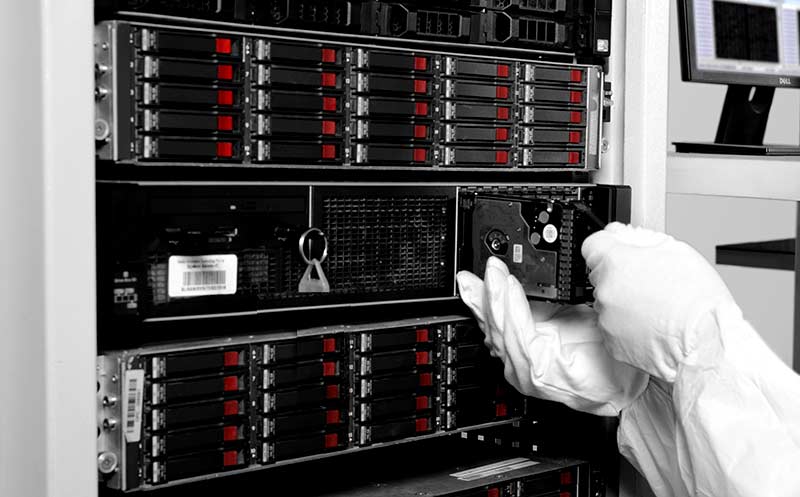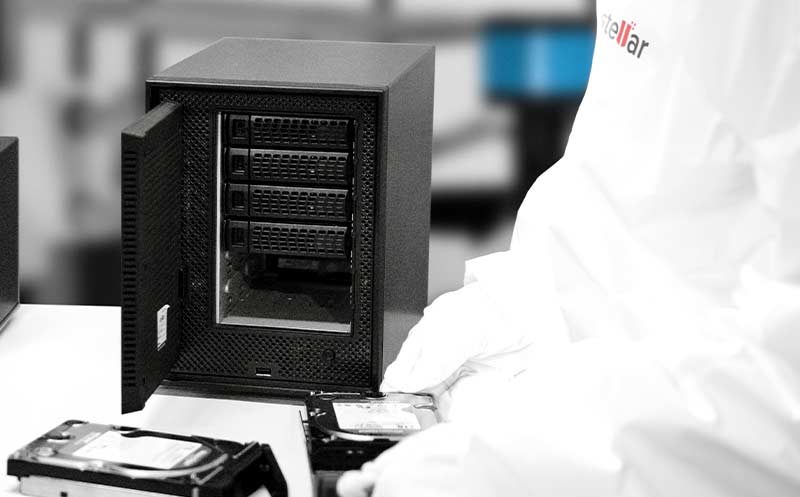While storing or backing up data, many of us rely on external storage drives, such as HDDs, SSDs, USB drives, etc. However, many users are also seeking RAID and NAS drives as preferred storage technologies for their broader data storage needs. These storage drives have their list of advantages and differences. Let’s find out how these drives are fundamentally different from each other and how you can benefit from them.
What is RAID Storage Technology?
The Redundant Array of Independent Disks or RAID is a set of multiple hard disks that act as one logical unit for delivering improved performance, better data security against drive failure, and higher storage capacity.

This data storage virtualization technology consists of several levels, called RAID levels, ranging from RAID 0 to RAID 60. All RAID levels are based on unique data storage mechanisms, including Mirroring, Striping, and Parity. Some of them deliver better fault tolerance than others because of the data storage mechanisms on which they’re built.
What are the different levels of RAID?
There are multiple RAID levels available. However, the most popular ones are RAID 0, RAID 5, RAID 6, and Nested RAID including RAID 10, 50, and 60. Let’s understand them briefly:
RAID 0 – It follows the Striping mechanism to store data, meaning the data is split into block sizes written across the disks, thereby allowing quick read/write functions. This RAID level can work with two hard drives.
RAID 1 – It follows the Mirroring mechanism, meaning data on the blocks are copied and replicated to multiple drives. It offers a great reading speed. However, writing the same data on different drives slows down the process.
RAID 5 – It is based on the Parity mechanism and requires at least three disks. It splits the data between two disks and the third one collects information – ‘Parity Data’ from the other two disks. However, Parity data keeps spreading on every disk, making every disk a Parity drive, thereby offering fault tolerance against two drive failures.
RAID 6 – This RAID level follows Striping and Parity mechanisms to store data. It can withstand up to two disks’ failure. Thus provides balanced read/write speeds with better redundancy.
RAID 10 – This hybrid RAID setup combines RAID 1 (Mirroring) and RAID 0 (Striping) mechanisms. It mirrors the data that is striped across disks, offering fault tolerance up to two disks.
RAID 50 – This one follows Parity and Striping mechanisms. A minimum of 6 disks are required to build this setup. It offers faster rebuilds, better read/write performance, and better data protection.
RAID 60 – It follows Dual Parity and Striping mechanisms. This RAID configuration can accommodate 8 or more disks, and support up to 128 disks.
What is NAS and how it works?
Network-Attached Storage or NAS is a file-level data storage architecture that combines both hardware and software to support file sharing of networked devices. It gives a single access point to people to store or share data over a network easily. Hence, enabling multiple people to access data at any given time. It is a good option especially for storing unstructured data, including documents, images, spreadsheets, PPTs, and more.

Other than file storage and sharing, NAS can be used to perform multimedia tasks, including creating backups for protection against data loss, hosting virtual desktop infrastructure, streaming media files, creating an internal printing repository, testing or developing web-based and server-side apps, and more.
It’s quite easier to set up Network-Attached Storage as its architecture is often delivered with simplified scripts preinstalled with a streamlined OS. Further, the storage capacity of the NAS can be increased easily by adding more hard disks. It can also be formatted to support Redundant Array of Disks (RAID), replicated disks, or erasure coding to ensure data integrity.
RAID vs. NAS: What is the Difference?
At this point, it’d be quite clear to know the difference between RAID and NAS storage. These both storage technologies are quite distinct. Where RAID is a file-system technology, purely a configuration of two or more hard disks, combined as one logical unit, NAS is a network-accessible storage technology. NAS vs. RAID differences can also be figured out from the below table.
| RAID | NAS |
| RAID is a data storage virtualization technology that consists of two or more hard disks combined into logical units. | NAS is a file-level computer data storage technology that makes computer-stored data more easily accessible to all networked devices. |
| Since there are many RAID levels available, each level offers a different data storage capacity. | It offers sufficient storage space for a local computer. By adding more hard disks, the storage capacity of NAS devices can be increased. |
| RAID configuration can include hard disk drives and solid-state drives. | NAS enclosure can be based on hard disks and RAID levels |
| It is popular for providing fault tolerance, better performance, speedy read/write functions, and higher data security due to data redundancy. | It is used for providing easy access to data to multiple authorized users and heterogeneous clients over the network. It offers data security, improved performance, and more. However, as the number of users increases, LAN may slow NAS performance. |
NAS vs RAID – Which one to Choose?
Be it RAID enclosure or NAS, it’s not easy to state that one is better than the other. The choice between these two storage technologies highly depends on your preferences and the type of data you want to store. Both can be tweaked and used in combination to leverage optimum performance, data storage, and other benefits. NAS can be scaled up as per your storage capacity. RAID uses multiple disks for data storage. However, it won’t protect portable data devices.
If your preference is to connect multiple workstations to access the same data, NAS enclosure is what you should choose. If the motive is to add additional storage, performance, and data security to your only system, RAID is a good option. Further, if you’re considering the aspect of restoring data while comparing RAID vs. NAS, rest assured, as data recovery is possible from both storage technologies with the help of a RAID data recovery tool, such as Stellar Data Recovery Technician. This DIY software supports recovery from RAID 0, 5, 6, and Nested RAID drives. Additionally, it supports recovery from RAID-configured NAS. Hence, it’d be wise to keep the software handy to be prepared for the worst-case scenarios, such as disk errors or drive failure.
FAQs
Should I use RAID for NAS?
If your NAS setup has room for more drives, you can use RAID for NAS. You can choose the RAID levels as per your requirement. However, RAID 5 is most commonly used for NAS as it follows the Parity mechanism and can withstand up to two drive failures.
Was this article helpful?